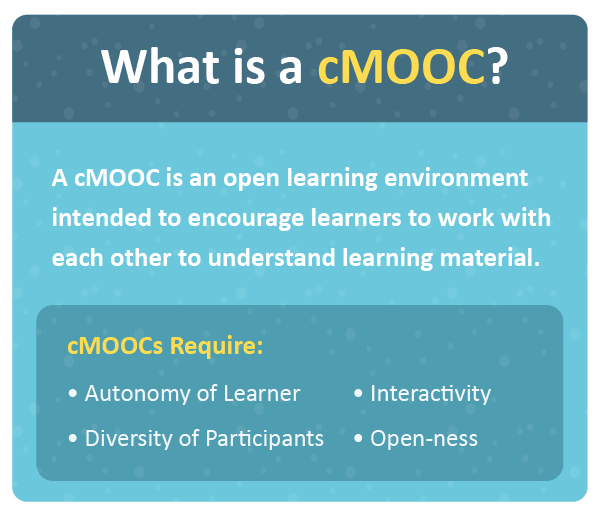
In 2008, Canadian scholars George Siemens and Stephen Downes developed the first MOOC course: Connectivism and Connective Knowledge Online Course (CCK08), or cMOOC. cMOOC connects lecturers, and The cMOOC connects instructors and learners worldwide through a common topic or theme. Through communication and collaboration, learners build learning networks and construct knowledge.
The current research on cMOOC is mainly focused on the following aspects: firstly, the research on the concept and theory of cMOOC; secondly, the discussion on the application strategies and methods of cMOOC courses; and thirdly, the analysis of the application of cMOOC courses. Further analysis of relevant research on cMOOC reveals fewer results on designing learning in cMOOC. Most of the existing research focuses on the theoretical inquiry stage and less on specific practical applications. Then how to better implement the learning design of cMOOC through technology application and interpersonal interconnection becomes the top priority. At the same time, related studies have found that technology application in cMOOC courses has a significant effect on learning effectiveness. Currently, technology applications in cMOOC are mainly focused on course organization tools, social interaction tools, and sharing of course content and resources. At present, the technology applications of cMOOC mainly focus on course organization tools, social interaction tools, course content, resource sharing tools, and so on. It can be said that the current research perspective on cMOOC is still lacking in the area of learning design with technology support. It is essential to incorporate new theories, technologies, and methods into the learning design of cMOOC to reflect better the openness, large scale, self-organization, real-time, dynamic generation, creativity, and social characteristics of cMOOC.
Bibliography:
Couros, A., 2010. Developing Personal Learning Networks for Open and Social Learning. In: G. Veletsianos, ed., Emerging Technologies in Distance Education. Edmonton: AU Press, Athabasca University, pp.109-128.